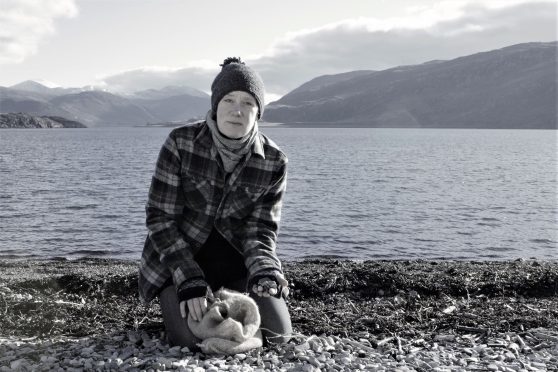Rita Campbell
With a background in sculpture and a degree in geography, Julia Barton is using her passion to deliver a powerful warning about the future of the marine environment.
The 58-year-old’s exhibition in Ullapool uses plastic collected around Wester Ross and Shetland to highlight the impact of the rubbish on our shores.
NEO Terra is the culmination of four years of research, which began in Ullapool and spanned 60 beaches from Gairloch to Cape Wrath.
Later this year the work will travel to the Scottish Parliament in Edinburgh to highlight the impact of marine plastics to ministers and MSPs.
The centrepiece of the exhibition is a large floor-based “map” featuring islands using “rocks” made from melted plastic.
These “plastiglomerates” are now common on some beaches as people burn the waste they find – and Ms Barton, from Leith, has collected thousands.
Her exhibition also includes an interactive area where visitors are invited to take a closer look at the collected beach samples through microscopes.
The artist hopes the work will make people think about the volume of plastic seeping onto our shores and how long it will remain there damaging the environment.
Ms Barton said: “What you actually see on beaches is just the tip of the iceberg and nothing compared to the unseen particles which break down into sand grains. The lifespan of these materials outlives us, our children and our grandchildren. It’s insidious and we need to address how it got there.”
She first started to get the inspiration for this exhibition when she was doing course on seaweed. She went to the beach to collect samples of seaweed and could hardly see any for the amount of rubbish.
Speaking about her work, she said: “I have used materials that aren’t easily recognisable as plastic to draw people in to the art, that I hope they then begin to think about.”
Ms Barton has worked on educational projects helping school pupils to survey beaches and raising awareness about what they find and how it got there. Some have been inspired to write to pharmaceutical companies and politicians requesting change.
In February, Johnson and Johnson joined some of the major supermarkets by bowing to public pressure to replace plastic stems in cotton buds with paper. The move will prevent more plastic reaching the seas and harming marine life.
Working with communities has always been a strong feature of Ms Barton’s approach and she’ll be taking part in a series of events during the exhibition including a walk along Isle Martin beach as part of the upcoming Isle Martin Festival and a World Ocean Day event in early June.
She hopes her creative perspective on a serious environmental issue might connect with new audiences.
She said: “I’d really like to take the exhibition to other coastal areas and deliver the educational programme there.”
The exhibition at the gallery in the Caledonian Hotel runs until June 30.
